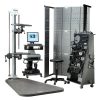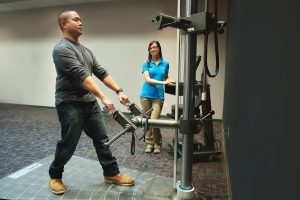
Workers' Comp Referrals: Panel vs Choice State
Treatment GuidelinesClinic owners who establish themselves as local leaders in workers' comp programs can gain increased marketability, consumer trust, and consistent referrals from local businesses. Here's a look at two different types of workers' comp referrals.
According to the National Safety Council, every seven seconds, a worker becomes injured on the job.1 Unfortunately, work-related injuries impose a significant economic impact on this country due to lost wages, decreased productivity, disability payouts, and even decreased employee satisfaction.
As it happens, workers’ compensation claims are valuable opportunities for physical therapy clinics to expand their practice. Clinic owners who can establish themselves as area leaders in workers’ comp programs can expect to gain increased marketability, consumer trust, and consistent referrals from local businesses.
Because of this, it’s helpful for clinic owners to understand the specific rules and regulations regarding workers’ compensation for their state, and how the different types of workers’ comp referrals will affect your practice.
What is workers’ compensation?
Workers’ compensation is a type of insurance purchased by businesses. It helps pay for medical expenses incurred by injuries or illnesses to employees which occur “in the course and scope” of the job.2 These may include:
- Injuries sustained in one-time accidents (like a slip and fall, car crash, or chemical burn)
- Injuries sustained during repetitive movements
- Illnesses caused by exposure to toxic substances
Workers’ comp also provides for lost wages and rehabilitation costs, as well as benefits to family members in the unlikely event of that an employee is killed on the job.
With few exceptions, all states legally require businesses who have non-owner employees to purchase workers’ compensation insurance coverage.3 The specific regulations for workers’ comp varies state by state, but in general include two main models: panel and choice. A third model, care direction, will be discussed in the section discussing a state-by-state breakdown of panel vs. choice.
In the following sections, we will discuss the advantages and disadvantages of panel and choice state models, specifically as they relate to therapy providers and clinic owners.
Workers’ compensation referrals by panel
In panel state, employees choose from a list of providers that the employer provides.
Provider advantages:
- Therapists and clinics selected for employer listings are poised to receive a steady stream of patient referrals
- There is great incentive for clinic managers to optimize their practice in order to remain competitive in the market
Provider disadvantages:
- Failing to meet an employer’s approved provider list creates a barrier to access of potential patient populations, especially if the employer has a large local presence
Ultimately, providers and clinic owners in panel states must consistently meet local employers’ criteria. Clinic managers can improve their standing with marketing campaigns, clinic upgrades, objective return-to-work protocols, and evidence-based practices.
Workers’ compensation referral by employee choice
In a choice state, employees are permitted to choose their own doctors for medical care related to their workers’ compensation claims.
Provider advantages:
- Clinic owners, therapists, and other providers are free to market directly to area employees
- Clinic owners can also gain a foothold in area businesses by marketing to and developing relationships with local employers, who can advocate for them to their employees if the clinic is deemed high-performing
Provider disadvantages:
- Providers still may experience barrier to access if employers are not vetting their services to employees
- Providers may be overlooked for others who are more geographically convenient, even if they are poorer-performing
In choice states, the imperative for providers and clinic owners is to optimize patient satisfaction and improve the patient experience, since it is ultimately the employee who determines where he or she will go for care. Seeking patient feedback, creating marketing campaigns geared toward community members and local business owners, offering updated and user-friendly technology, and strengthening the customer service skills of all staff members—from the front desk team to the clinicians themselves—are worthwhile investments of time and energy.
Panel vs. choice: state by state
The following lists provides an overview of which states offer workers’ comp referrals by panel or by employee choice.3
- Panel states include: California, Connecticut, Georgia, Illinois, Kentucky, Minnesota, New Hampshire, New York, Oregon, Pennsylvania, Tennessee, Texas, Utah, Virginia, West Virginia, and Rhode Island
- Choice states include: Alabama, Alaska, Arizona, Arkansas, Delaware, Hawaii, Louisiana, Maine, Maryland, Massachusetts, Nevada, Ohio, South Dakota, Vermont, Washington, Wisconsin, Wyoming, and the District of Columbia.
A third model for workers’ comp referrals is care direction. Under this model, the employer has the exclusive right to tell employees which doctor(s) to use for medical care related to their workers’ compensation. This can make it easier for a company to manage their list of providers. It’s also more restrictive for the employee compared to the panel model.
In many cases, however, an employer can help facilitate better outcomes for their employees and their own bottom line, since it’s in their best financial interest to always select the highest performing providers for employee care.
States that offer care direction workers’ compensation include: Colorado, Florida, Idaho, Indiana, Iowa, Kansas, Michigan, Mississippi, Missouri, Montana, Nebraska, New Mexico, North Carolina, North Dakota, Oklahoma, South Carolina, and New Jersey.
For more specific information on workers’ comp referrals, you should contact your state’s agency, which you can find from the U.S. Department of Labor.
Sara M., DPT
References
- National Safety Council. Workplace Injuries. Retrieved from https://www.nsc.org/work-safety/tools-resources/infographics/workplace-injuries
- Nationwide. What is Workers’ Compensation Insurance? Retrieved from https://www.nationwide.com/what-is-workers-compensation-insurance.jsp
- Moore, G. (2018). How Every Jurisdiction Can Benefit From an Outcomes-Based Approach. Retrieved from https://www.workerscompensation.com/news_read.php?id=28774





